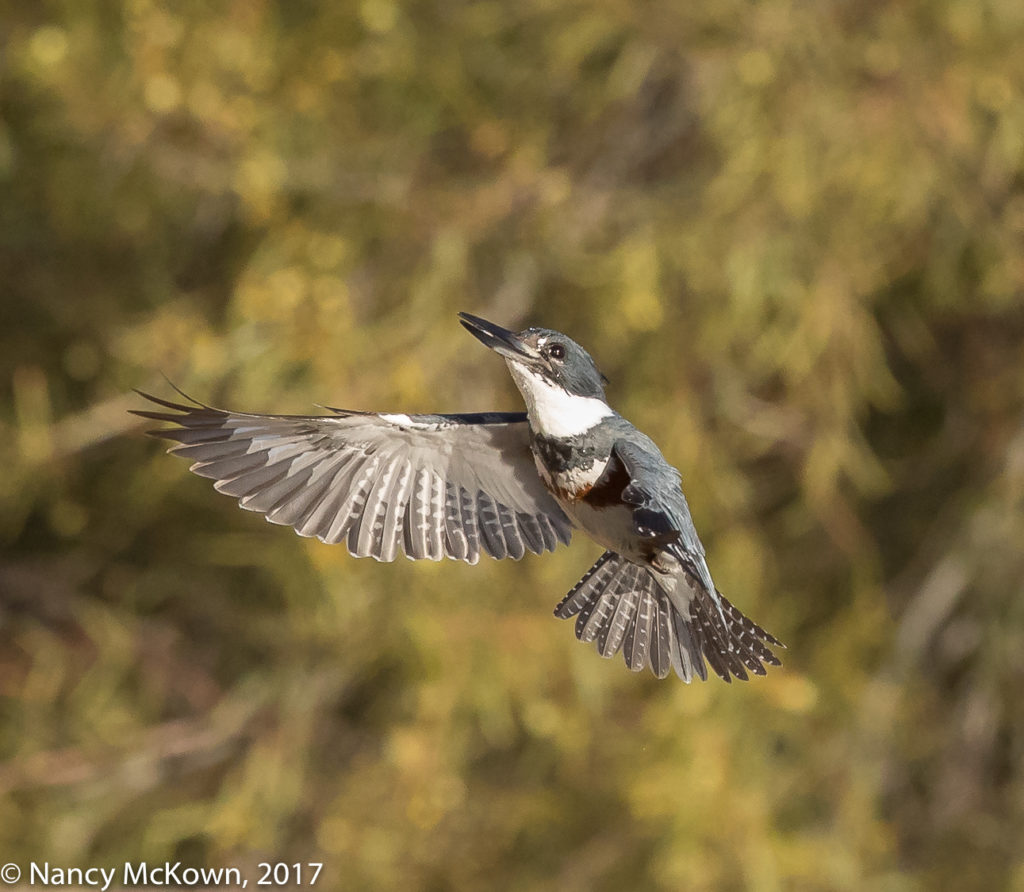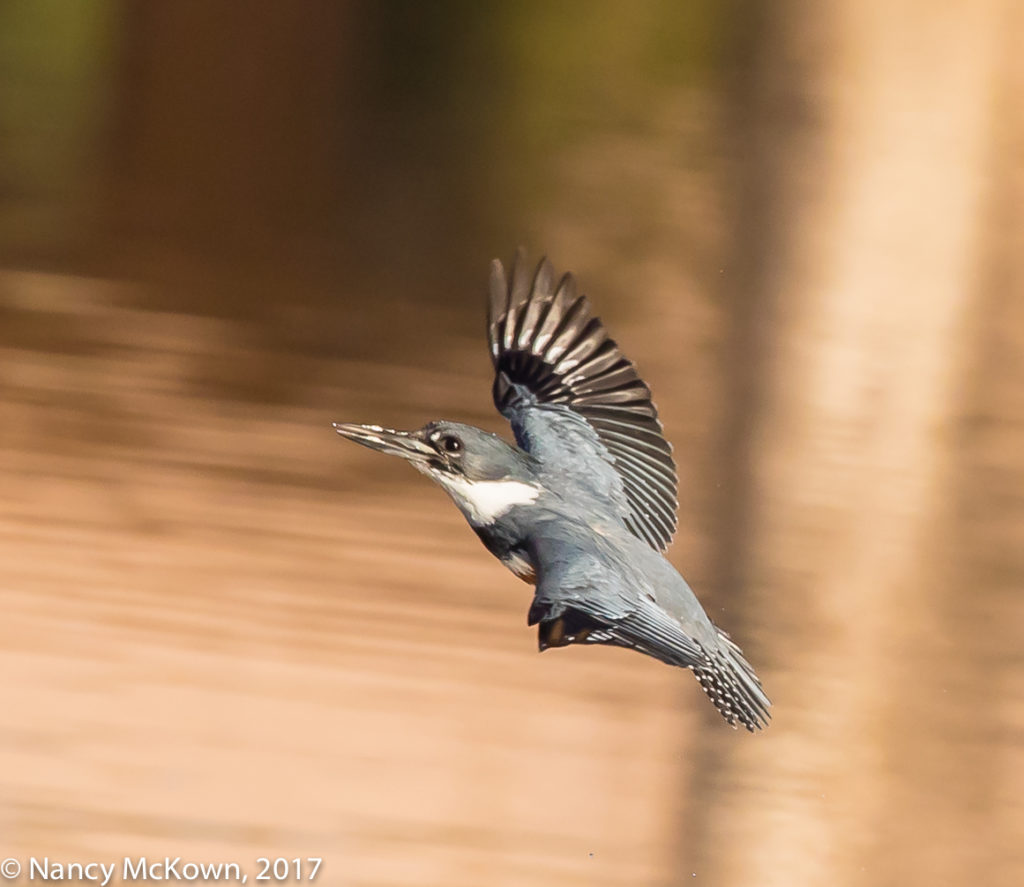Photographing A Kingfisher in Flight
Kingfishers hunt from above, intently watching the water in search of a wide assortment of aquatic creatures. Avian predators with oversized heads, they hover above their unaware prey seconds before commencing a beak-first precisely controlled dive. These images of a Kingfisher were taken as she transitioned from water to air and rose up (with prey) to her waterside perch. Traveling much slower than when she made her missile-like descent, it was easier to anticipate and capture her flight with the camera.
On this shoot, the autofocus system was set to the predictive Al Servo. Because the bird was not close, I restricted the auto focus to a cluster of 6 central points, hoping that I could effectively track and frame her.

Heading Up After Her Successful Dive.
ISO2500; f/8; 1/3200 Second
Optimal Sharpness
Flying birds are a challenge to photograph. To achieve optimal sharpness, the photographer has to take into consideration:
- Favorable lighting,
- A fast shutter speed,
- Auto focus mode,
- The degree of auto focus point expansion,
- Image stabilization,
- Bursting capacity,
- Depth of field (increases the farther you are away from your subject),
- Focal length of the lens (and size of the bird),
- Steady panning skills (the closer the bird, the faster you have to pan the camera),
- Keeping all of the bird in frame,
- Tripod steadiness,
- Equipment malfunction....
The list goes on and on.
Angle of Flight
Photographing birds in flight also requires consideration of a host of complex interacting circumstances, some of which will be beyond the photographer’s control. One such uncontrollable is the bird’s flight path and how it aligns with the camera’s focal plane.
When focus is soft on one or more parts of the image, I check and recheck my settings. If these settings appear to be optimal for the shoot, I try to figure out if the bird’s flight trajectory is aligned with the camera’s focal plane.
All long telephoto lenses inherently deliver a very shallow depth of field. If your subject is not flying on a path with the camera’s focal plane, parts of the bird (depending on your aperture setting) will be captured while they are outside the optimal depth of field range. The larger this discrepancy, the more softly focused your subject will be. (NOTE: To get an idea of how thin your depth of field can be on long lenses and wide open apertures, see this DOF calculator. If you want this information readily available in the field, there are DOF calculator apps available for iPhones and Droids. )

ISO1000; f/8; 1/3200 Second
Lightroom Plugin
In your search to discover why an image is not tack sharp, you might investigate a Lightroom add-on tool that can pinpoint exactly which focus points the camera selected when you captured the image. It’s a free and easy to use plugin available at lightroomfocuspointsplugin.com. It works best with RAW data. In addition, if you have a Canon system, the software included with the camera (Digital Photo Professional) will also indicate which focus points were active.

Dripping Wet and Readying for her Next Strike
Ragged Crest Held High
ISO1000; f/8; 1/2500 Second